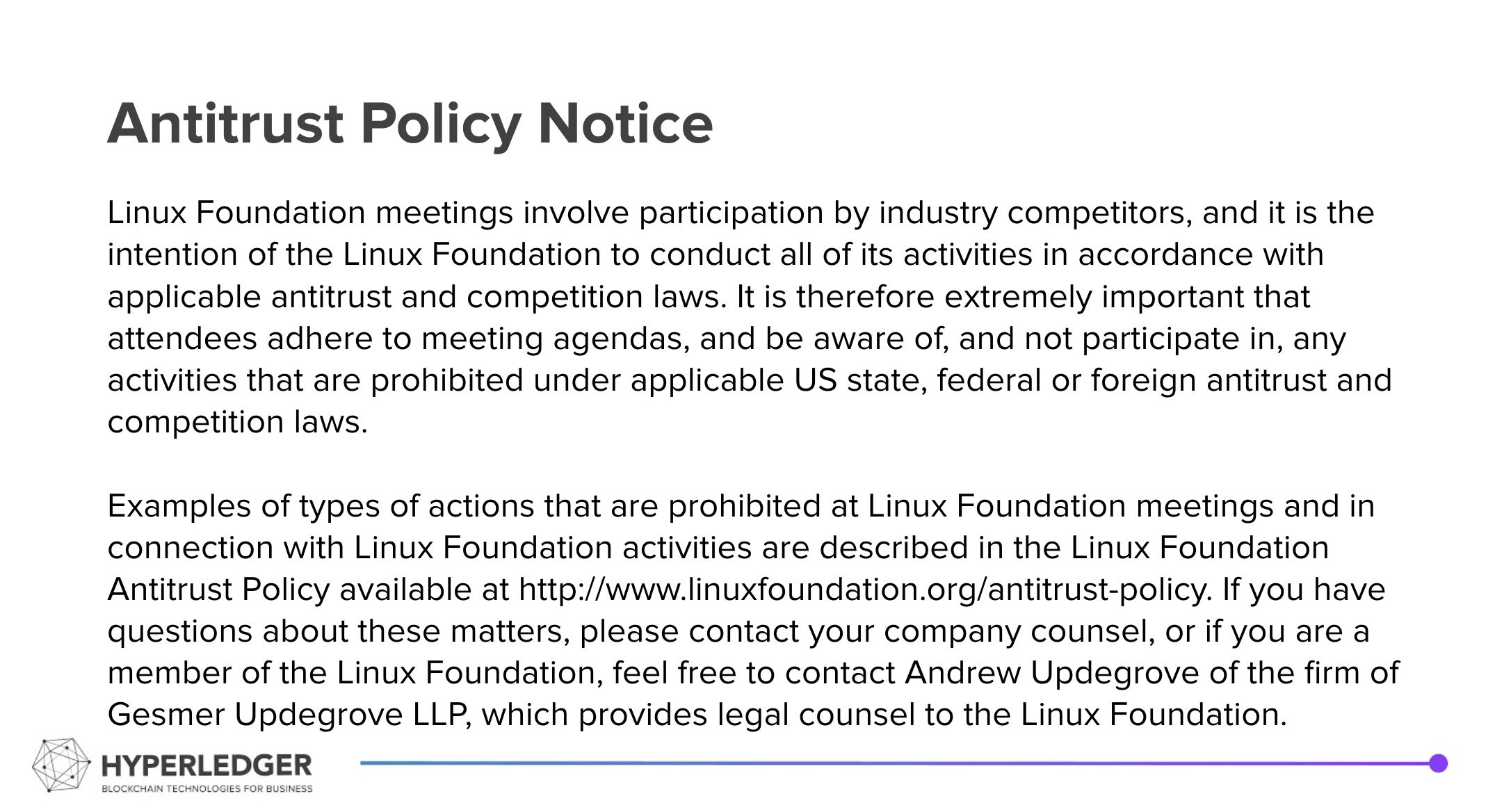Summary
- Update on AnonCreds Happenings
- Discussion: Modularity in the Underlying Signature Schemes - Mike Lodder
- Understandable names for schema types
- Presentation Data Models
- Open Discussion
Recording of Call: https://youtu.be/qAkODMA3dgc
Notices:
This specification creating group operates under the Linux Foundation Community Specification License v1.0.
Hyperledger is committed to creating a safe and welcoming community for all. For more information please visit the Hyperledger Code of Conduct. |
|---|
Meeting Attendees
Stephen Curran (BC Gov / Cloud Compass Computing Inc.) <swcurran@cloudcompass.ca>
Related Repositories:
- Mike Lodder's proposed Data Models: https://hackmd.io/ZlsnLoclSveePJOZljgMfA
- AnonCreds v2.0 Specification Repository: https://github.com/hyperledger/anoncreds-spec-v2/
- AnonCreds v1.0 Specification: https://hyperledger.github.io/anoncreds-spec/
- AnonCreds Methods Registry: https://hyperledger.github.io/anoncreds-methods-registry
- AnonCreds Rust Open Source Code: https://github.com/hyperledger/anoncreds-rs
Goals of the Working Group:
The goal of AnonCreds v2.0 is to retain and extend the privacy-preserving features of AnonCreds v1.0, while improving capabilities, performance, extensibility, and security.
Meeting Preliminaries:
- Welcome and Introductions
- Announcements:
- 2023.05.15 (this Thursday): Presentation: ZKPs – the High School Math Edition - Stephen Curran at the Identity SIG Meeting
- Updates to the Agenda?
Agenda
- Update on AnonCreds Happenings
- Discussion: Modularity in the Underlying Signature Schemes - Mike Lodder
- AnonCreds v2.0 could use one of four (CL, BLS, BBS, and PS) signatures schemes at the moment. How does that work?
- As with CL Signatures, data is encoded as numbers
- The additional Schema Claim data allows for "improved" encoding – e.g. zero centring integer data
- The signature type and the Schema Claim data determine exactly what is needed per claim to enable comparable presentation ZKP capabilities.
- These will have to be defined in the specification – e.g.
- the requirements of the cryptography for the features, and,
- for specific signatures to be supported (perhaps BBS+ and PS), the details of using those signatures
- These will have to be defined in the specification – e.g.
- Purposes/use cases for the Schema Types proposed for AnonCreds v2.0, with a goal of leading to some useful names for the different types:
- Enumeration
- Hashed
- Numeric
- Scalar
- String
- Unsigned Byte/Binary
- Hashed: claim data is hashed before signing
- Numeric: claim data is zero centered before signing
- Scalar: claim data is already a cryptographic value. Equivalent to a null hash
- Enumeration
- Predicates:
- Hide signature – proof of signature (unlinkable)
- Hide attribute - reveal or hide - Schnorr Proof
- Set memberships, such as
- Zip/postal Code
- State
- City
- Accumulator
- Commitment - same value
- Range Proof
- Verifiable Encryption
- Commitment
- Not discussed: Claim equality across credentials (e.g. proof that the claims in two credentials are the same without sharing the value).
Future Calls
- Collect some use case specific examples and continue the discussions:
- Applying the data structures to a real use case or two
- What concrete uses other than link-secret is there for blinded data in a credential?

